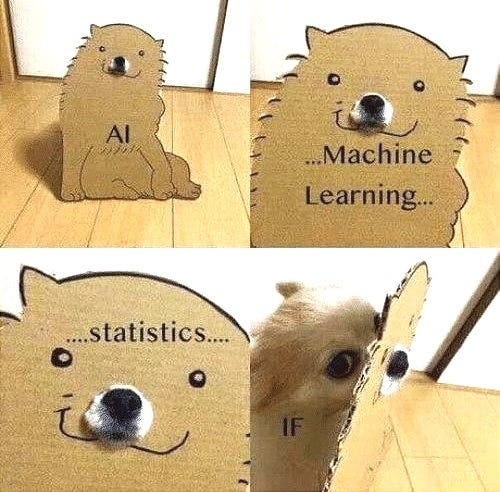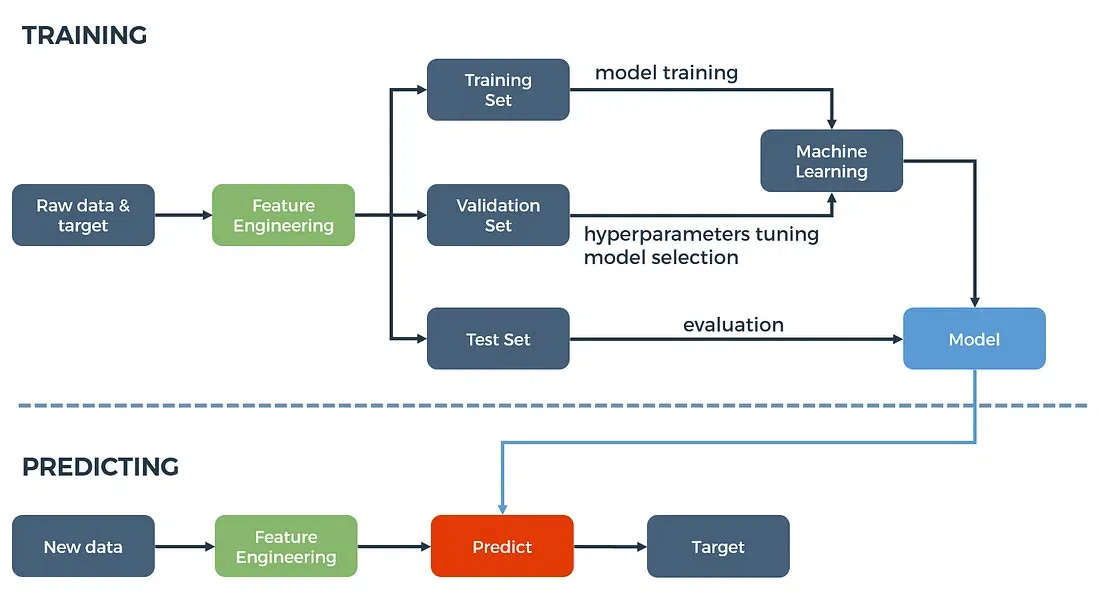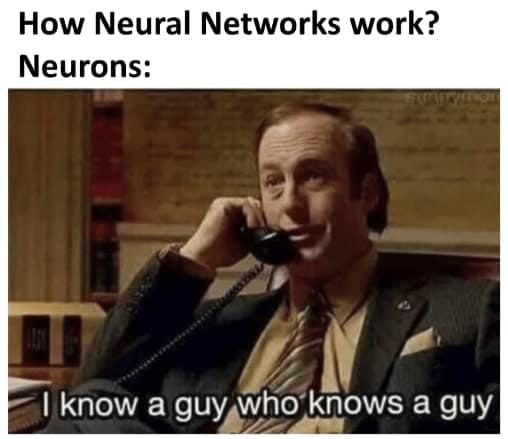The AI That Builds Itself: Understanding AutoML and Self-Optimizing Models
How AI is learning to build and improve itself, explained simply
Have you ever wondered how those amazing AI systems we use every day are built? It often sounds like something only super-smart scientists in labs can do, right? Well, that's changing fast, thanks to something called Automated Machine Learning(AutoML), and the exciting idea of "self-optimizing models."
In todays edition of Where's The Future in Tech, we're going to break down what these fancy terms mean in plain, simple English. We'll explore why they're such a big deal, how they work, and what they mean for the future. So, let's dive in!
What is Automated Machine Learning (AutoML)?
Imagine you have a bunch of information, say, about what makes a customer happy or what leads to a product selling well. You want a computer program to look at this information and find patterns, to make predictions, or to make decisions. This is where Machine Learning comes in.
Traditionally, building that learning program involved several steps, and each step needed expertise:
Picking the right tool (Algorithm): There are tons of different ways computers can learn. Think of them like different tools in a toolbox. Choosing the right tool for the job is super important. If you're trying to hammer a nail, you don't use a screwdriver!
Getting the data ready: Data is often messy. It might have missing pieces, or it might not be in the right format for the computer to understand. Cleaning and preparing the data is a crucial step.
Setting the dials (Hyperparameters): Even after you pick the right tool, there are often little settings or "dials" you need to adjust to make it work best for your specific data. Getting these dials just right can make a huge difference in how well the program learns.
Training the model: This is where the computer actually "learns" from the data. It's like feeding it information and letting it figure things out. This can take time and computing power.
Checking if it works: Once the program has learned, you need to see how well it performs. Is it making accurate predictions? Is it doing what you want it to do?
AutoML is about automating many of these steps. Instead of you manually doing all of them, AutoML platforms or tools can:
Automatically try out different learning tools (algorithms) for you. It's like it intelligently picks the best hammer or screwdriver for the job without you having to be an expert on every single tool.
Help with getting the data ready. Some AutoML tools can suggest ways to clean or prepare your data, or even do some of it automatically.
Automatically adjust those "dials" (hyperparameters). This is a big one. Instead of you spending hours figuring out the best settings, AutoML can experiment with different combinations to find the ones that work best for your data. This is like the tool automatically fine-tuning itself.
Handle the training process.
Why is this a big deal?
Because it makes Machine Learning more accessible to more people. You don't need to be a Ph.D. in computer science to start using smart computer programs. Business analysts, data scientists who are just starting out, and even people in other fields can now leverage the power of Machine Learning without needing deep expertise in every single technical detail.
Think about it:
Faster results: Because AutoML automates so much, you can build and test machine learning models much quicker.
Lower barrier to entry: More people can get involved and use these powerful tools.
Potentially better results: Sometimes, AutoML can find combinations of settings and tools that a human might not have thought of, leading to better performance.
AutoML is becoming increasingly popular in many areas:
Business: Predicting customer churn, recommending products, forecasting sales.
Healthcare: Identifying diseases from medical images, predicting patient outcomes.
Finance: Detecting fraud, predicting stock prices.
Marketing: Personalizing ad campaigns, understanding customer behavior.
How Do Self-Optimizing Models Take It a Step Further?
Now, if AutoML is about building the best AI model to begin with, self-optimizing models are about that AI model getting even better on its own, over time. It's like our car not only being built perfectly but also having the ability to learn from its driving experiences and automatically adjust its engine, tires, and suspension to perform better in different conditions, without anyone touching it.
Here's how they generally work:
Continuous learning: Traditional AI models are often trained once on a fixed set of data. If the world changes, or new data comes in, they might become less accurate. Self-optimizing models are designed to learn continuously. They keep taking in new information and adjust themselves as things evolve.
Feedback loops: Imagine a self-driving car. It constantly gets feedback from its sensors about the road, other cars, and its own movements. If it makes a mistake, it learns from it and adjusts. Self-optimizing AI systems use similar feedback loops. They monitor their own performance and use that information to refine their behavior.
Adapting to change: Our world is constantly changing. Customer preferences shift, new trends emerge, and market conditions fluctuate. Self-optimizing models can adapt to these changes in real-time, making them incredibly valuable for businesses that need to stay agile.
Learning to learn (Meta-Learning): This is a bit more advanced, but some self-optimizing systems can even learn how to learn more effectively. It's like a student who not only learns the subject matter but also figures out the best study methods for themselves. This helps them get better at training themselves for new tasks.
Automatic adjustments: This isn't just about small tweaks. Self-optimizing models can automatically adjust their internal workings, sometimes even redesigning parts of their "brain" (their neural network architecture) to become more efficient or accurate for specific tasks.
Think of it this way: AutoML helps you launch a great AI. Self-optimizing models ensure that AI stays great and gets even better as it gains more experience.
Why Are These Developments a Big Deal?
The rise of AutoML and self-optimizing models isn't just a technical curiosity; it's a game-changer for many reasons:
Democratizing AI: Before, building powerful AI models usually required a team of highly skilled data scientists and machine learning engineers. This made AI expensive and out of reach for many smaller businesses or individuals. AutoML lowers this barrier significantly. It makes AI more accessible, allowing more people to harness its power without needing to be coding wizards.
Saving time and money: The manual process of building and fine-tuning AI models is incredibly time-consuming and therefore costly. AutoML automates many of these tasks, dramatically speeding up the development process. This means businesses can get AI solutions up and running much faster, leading to quicker insights and benefits.
Boosting productivity: For experienced data scientists, AutoML doesn't replace them. Instead, it frees them from the more tedious and repetitive parts of their job. This allows them to focus on more complex problems, strategic thinking, and creative problem-solving the things that truly require human intelligence. It makes them more productive and allows them to tackle more challenging AI projects.
Better performance: AutoML tools, by rapidly testing countless combinations of algorithms and settings, can often find models that perform even better than what a human expert might come up with through manual trial and error. Self-optimizing models then ensure this performance is maintained and improved over time in real-world situations.
Adapting to a dynamic world: In today's fast-changing business environment, static AI models quickly become outdated. Self-optimizing models are built to thrive in this dynamic landscape, constantly adjusting to new data and conditions, ensuring that predictions and decisions remain relevant and accurate.
Reducing human error: Let's face it, humans make mistakes. In the complex world of machine learning, small errors in data preparation or hyperparameter tuning can lead to big problems. AutoML reduces the chances of such human errors, leading to more reliable and consistent AI models.
Real-World Examples of AutoML and Self-Optimizing Models
These technologies are already at work all around us:
Customer service chatbots: Imagine a chatbot that gets better at understanding your questions and providing helpful answers the more people it interacts with. Self-optimizing models help these chatbots learn from every conversation.
Fraud detection: Banks use AI to detect fraudulent transactions. Self-optimizing models can learn about new fraud patterns as they emerge, constantly improving their ability to spot suspicious activity.
Personalized recommendations: When you see suggestions for movies, products, or music that you might like, that's often powered by AI. Self-optimizing models help these systems get better at understanding your preferences as you interact more with the platform.
Healthcare: In healthcare, AI can help diagnose diseases. AutoML can help doctors and researchers build more accurate diagnostic models faster, even if they aren't AI experts. Self-optimizing models could then potentially adapt to new patient data or emerging disease patterns.
Predictive maintenance: In factories, AI can predict when a machine is about to break down. Self-optimizing models can learn from past machine failures and maintenance records to make even more accurate predictions, helping businesses save money and avoid costly downtime.
The Future is Bright (and Automated!)
The rise of AutoML and self-optimizing models is a clear sign that AI is becoming more powerful, more accessible, and more deeply integrated into our lives. We're moving towards a future where:
AI creates AI: We'll see more sophisticated AI systems that can build and improve other AI systems, leading to a rapid acceleration in AI development.
Domain experts lead the way: People who deeply understand specific industries (like healthcare, finance, or retail) will be able to build and deploy powerful AI solutions for their unique problems, even without extensive coding knowledge.
Human-AI collaboration flourishes: Instead of AI replacing humans, it will increasingly augment our abilities. Data scientists will work alongside AutoML tools, focusing on the bigger picture and the truly innovative aspects of AI, while the automation handles the heavy lifting.
Continuous adaptation is the norm: AI systems will be expected to continuously learn and adapt to changing environments, making them more resilient and effective in real-world scenarios.
Of course, with great power comes great responsibility. As AI becomes more autonomous, discussions around ethics, bias, and control become even more important. We need to ensure that these self-optimizing systems are built and used in a way that benefits everyone.
But make no mistake: Automated Machine Learning and self-optimizing models are here to stay, and they are fundamentally changing how we build, deploy, and interact with artificial intelligence. Get ready for a future where AI isn't just smart, it's also smart enough to make itself even smarter!
Until next time,
Stay curious, stay innovative and subscribe to us to get more such informative newsletters.
Read more of WTF in Tech newsletter:








